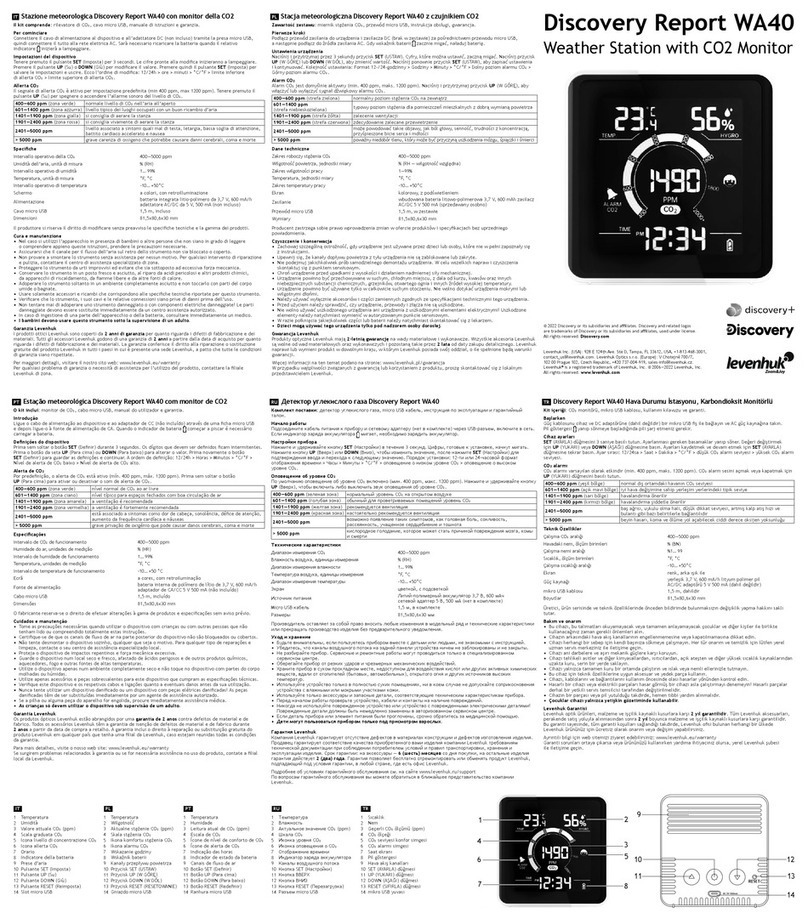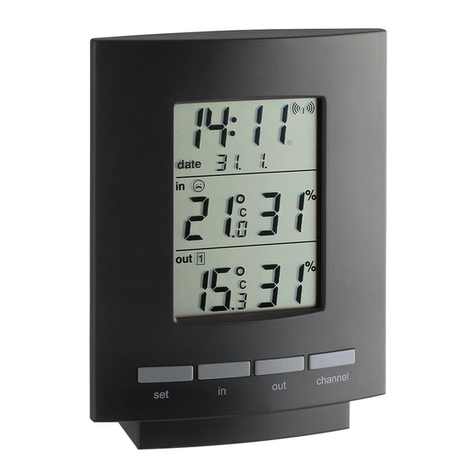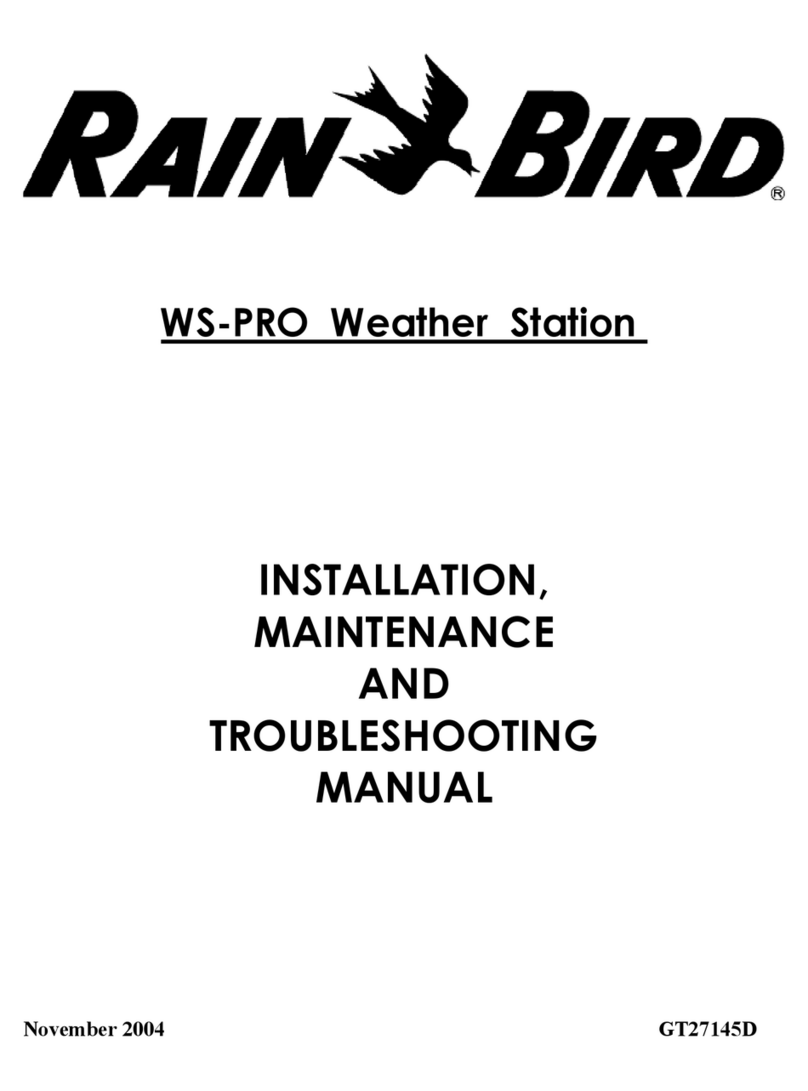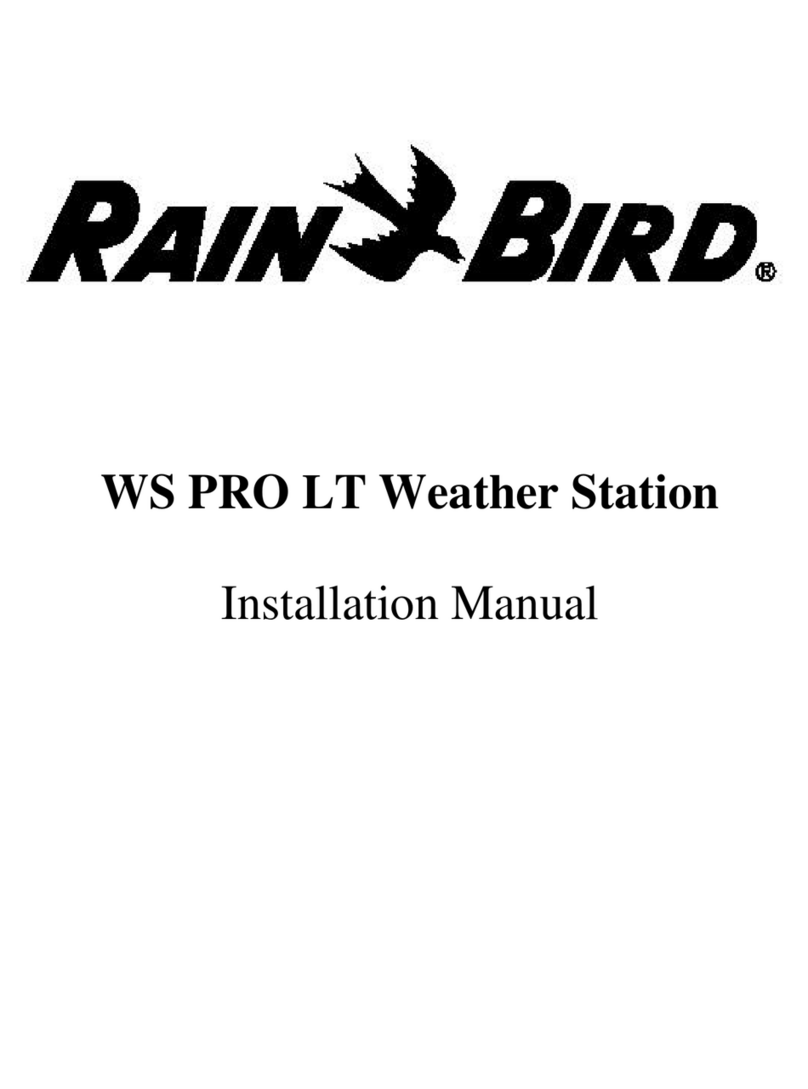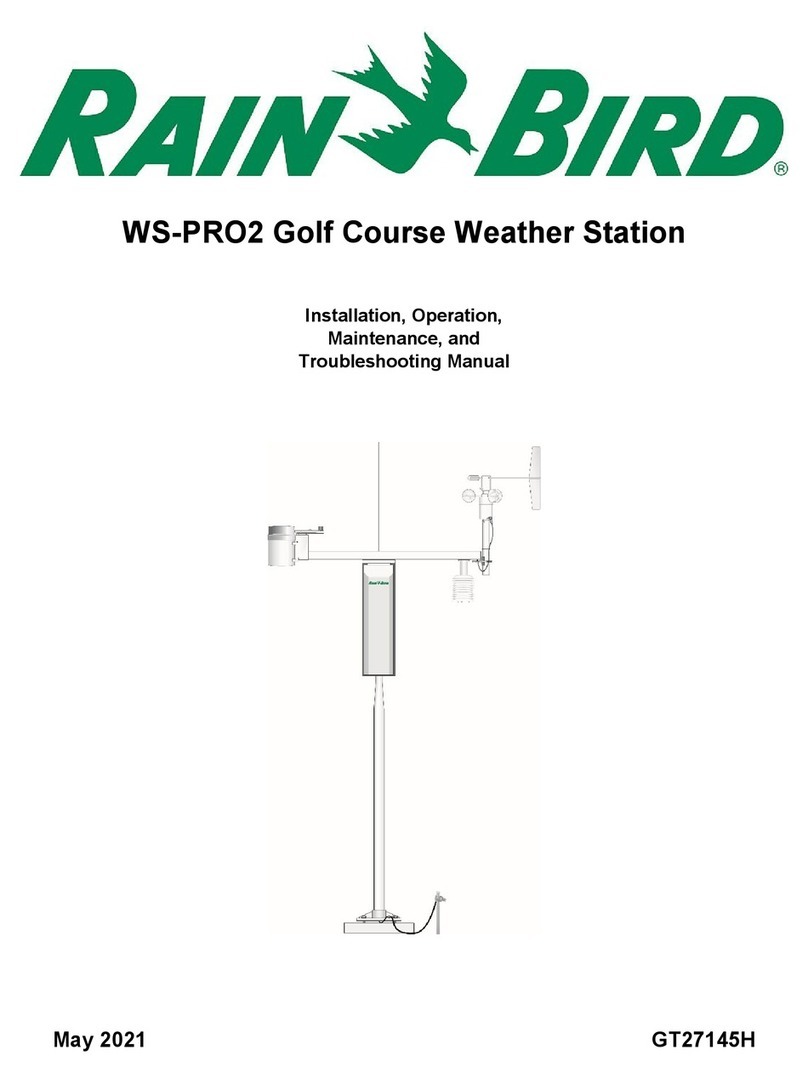
WS-PRO2 Weather Station Manual
GT 27176 Page 2 of 61
Table of Contents
1.0 General Information................................................................................................ 4
2.0 Installation Tasks..........................................................................................................6
2.0.1 Tools Required................................................................................................... 6
2.0.2 Preparation......................................................................................................... 7
2.1 Site Selection ................................................................................................................ 9
2.1.1 Wind Speed and Direction................................................................................. 9
2.1.2 Temperature and Relative Humidity................................................................ 10
2.1.3 Precipitation..................................................................................................... 11
2.1.4 Solar Radiation................................................................................................. 11
2.1.5 Soil Temperature.............................................................................................. 11
2.1.6 Determining True North for Wind Vane Orientation...................................... 11
2.1.7 NSSDC CGM Service...................................................................................... 12
3.0 Base Tower Installation .............................................................................................. 15
3.0.1 Base Installation............................................................................................... 15
3.0.2 Installation of Concrete Base........................................................................... 16
3.1.0 Base Tower Components................................................................................. 17
3.1.1 Tower Installation............................................................................................ 17
3.1.2 Weather Station Grounding............................................................................. 19
3.1.3 Grounding Procedure....................................................................................... 19
4.0 Instrumentation Installation........................................................................................ 25
4.1.0 Enclosure, Datalogger, Power Supply............................................................. 27
4.1.1 Battery Installation........................................................................................... 27
4.1.2 Solar Panel Installation.................................................................................... 29
4.1.2 AC Power Installation...................................................................................... 30
4.1.3 Enclosure Installation....................................................................................... 31
4.2 Communication and Data Storage Peripherals................................................... 37
4.2.1 Phone Modems................................................................................................. 38
4.2.2 Short Haul Modems......................................................................................... 39
4.2.3 Sealing and Desiccating the Enclosure............................................................ 41
5.0 Installation of Sensor Arm.......................................................................................... 43
5.1.0 Components ..................................................................................................... 43
5.2.0 Installation........................................................................................................ 44
5.3.0 Sensor Connection.......................................................................................... 44
5.4.0 RH and Temperature Radiation Shield........................................................... 44
6.0 Sensor Installation....................................................................................................... 47
6.1.0 Wind Sensor..................................................................................................... 47
6.2.0 Rain Gauge Installation.................................................................................... 50
6.3.0 Pyranometer..................................................................................................... 50
6.4.0 Soil Temperature Sensor (Optional)................................................................ 52
6.5.0 Sensor Schematics ........................................................................................... 52
7.0 Maintenance and Troubleshooting.............................................................................. 56
7.1.0 Maintenance..................................................................................................... 56
7.1.1 Instrumentation Maintenance........................................................................... 57
7.1.2 Batteries ........................................................................................................... 57

